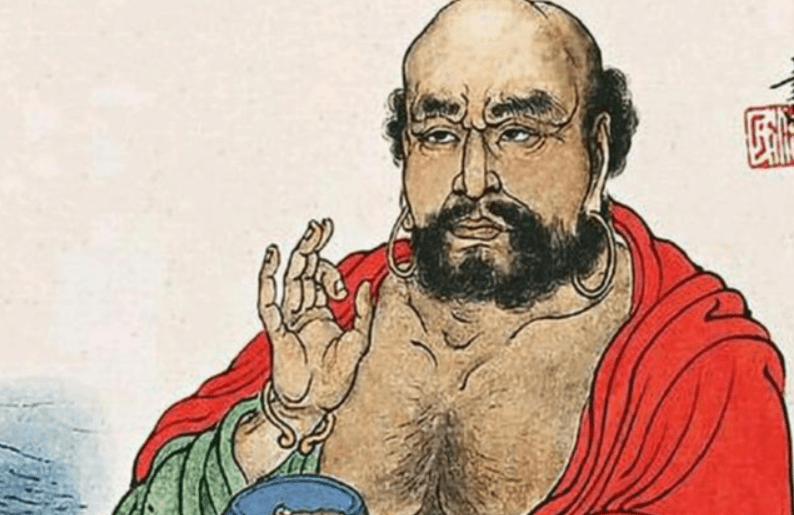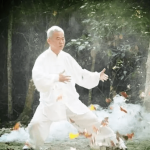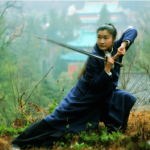这 “18 Buddha Hands Qigong” is a method mainly based on standing positions for exercise. On one hand, it allows the brain and central nervous system to rest, and on the other hand, it boosts blood circulation, enhances the metabolism of various systems, and helps with regulation. It’s great for practicing at home with family. Next, there’s a breakdown of the 18 Buddha Hands Qigong.
18 Buddha Hands Qigong practice GIF
Movement One:

Movement Two:

Movement Three:

Movement Four:

Movement Five:

Movement Six:

Movement Seven:

Movement Eight:

Movement Nine:

Movement Ten:

Movement Eleven:

Movement Twivle:

18 Buddha Hands Qigong breathing method
How to breathe
- Breathe through your nose, not your mouth.
- Inhale Up, Exhale Down: Focus on the direction of your breath. Inhale, guiding the air upwards; exhale, guiding it downwards.
- Posture Matters: Whether standing, sitting, or lying down, maintain a straight alignment. When standing or sitting, the breath moves vertically; when lying down, it moves horizontally towards the head on inhale and towards the lower body on exhale.
- Holistic Approach: Avoid fixating on individual body parts. Instead, concentrate on the overall flow of breath throughout your body.
- Gentle, Slow, Deep, and Even Breathing: Practice a gentle, 慢的, 深的, and even breathing rhythm. This method, known as long breathing, aids in concentrating your energy and spirit, foundational in martial arts.
- Foundation of Martial Arts: Long breathing serves as the cornerstone for various breathing techniques in martial arts, tailored for different stances and movements.
- Distinction from Deep Breathing: Long breathing differs from deep breathing. While deep breathing fills up quickly, long breathing emphasizes a slow and steady inhalation and exhalation pattern.
Benefits of the breathing way
- Long breathing has at least two benefits: it increases lung capacity and ensures you have plenty of reserve energy.
- Pull in your stomach when inhaling and also when exhaling (you can relax it slightly). This action has two effects: it keeps your stomach from moving outward, allowing the air to move up and down vertically, and it helps manage the functions of your internal organs, improving digestion and secretion systems.
- When breathing, don’t focus too much on your thoughts; just breathe sincerely. However, you can put a bit of effort into it.
What to notice
- Breathing and exhaling are opposite actions. Breathing refers to internal air; when you breathe in, you pull the air upwards and when you exhale, you let it move downwards. Exhaling refers to taking in external air; when you exhale, you pull the air downwards and when you inhale, you let it move upwards because your lungs are lower in your body and your nose is higher up.
- Breathing in and breathing out in one breath refers to the ancient language habits and means inhaling and exhaling. Breathing in this context doesn’t mean waiting for a movement to finish to take a breath in or out; that’s a misunderstanding. In Yi Jin Jing, breathing happens simultaneously with movements, where the energy and movement are coordinated as one.
- When bending, slightly clench your teeth and mostly close your breath, only using very subtle “nose breathing.” With practice, you can completely hold your breath.
- Breathe through your nose, inhaling upwards and exhaling downwards. Your breath should be slow, 长的, and even. Palms overlapping, thumbs pointing backward, fingers forming a small circle, arms creating a larger circle, elbows forward, pull in your stomach and waist. As you move upward, focus on “supporting the internal organs” and allowing them to shift.

Tips For 18 Buddha Hands Qigong Beginners
- “齐” is the essential element for mastering the Yi Jin Jing. 这 18 Buddha Hands Qigong divides the practice into three levels: muscle training, diaphragm training, and qi training. To train muscles, you must train the diaphragm, and to train the diaphragm, you must train qi. Developing internal energy is crucial for mastering the 18 Buddha Hands Qigong.
- How can you effectively cultivate internal energy while practicing Yi Jin Jing? The key is to achieve coordination between adjusting your mind, body, and breath—essentially achieving harmonious unity. This means in the movements of the 18 Buddha Hands Qigong, focus on guiding your thoughts, coordinating with your breath, and utilizing the core function of your lower abdomen (dan tian).
- The goal of practicing 18 Buddha Hands Qigong is to attain a balance of Yin and Yang in the body and awaken its potential. Practicing Yi Jin Jing involves harmonizing and effectively exchanging information and energy between the body and the external world through adjustments in mind, body, and breath. This leads to balancing the Yin and Yang within the body and achieving personal and external Yin-Yang harmony.
- In essence, the 18 Buddha Hands Qigong is about balancing the overall Yin-Yang within the body. Therefore, practitioners need to aim for this balance as their goal and apply it to their daily practice to understand that “qi” is the core element for mastering the Yi Jin Jing. 这 18 Buddha Hands Qigong divides the practice into three levels: muscle training, diaphragm training, and qi training. Training muscles requires training the diaphragm, and training the diaphragm requires training qi. Cultivating internal energy is crucial for mastering the 18 Buddha Hands Qigong.
- The fundamental goal of practicing 18 Buddha Hands Qigong is to achieve a clear balance between Yin and Yang. This aims to attain a Yin-Yang equilibrium in the body, unlocking its hidden potential. Practicing the Yi Jin Jing involves a process of harmonious and effective exchange of information and energy between the human body and the external world through adjustments in mind, body, and breath. This process aims to balance the internal Yin and Yang in the body while achieving harmony between personal and external Yin-Yang.
- Essentially, 18 Buddha Hands Qigong is about cultivating an overall balance of Yin and Yang within the human body. Therefore, practitioners truly understand the essence of the superior Chinese martial arts skill of Yi Jin Jing only when they make achieving a state of mutual support and balance between Yin and Yang their practice goal and apply it to their daily training.
- Focusing on adjusting the mind is a fundamental step in mastering 18 Buddha Hands Qigong. Practicing this form of Qigong requires a high emphasis on adjusting the mind, which refers to thoughts and is a function of the brain. It involves feedback through language, imagery, movement, and more to construct, reorganize, and optimize, ultimately aiming to harmonize Yin and Yang within the body and unleash its potential. Thoughts, as a psychological process, involve the conversion of energy. When thoughts are in action, they facilitate the transmission of information, so in a way, information is equivalent to energy.
- While practicing 18 Buddha Hands Qigong, some people may feel sensations like heaviness, lightness, warmth, coldness, tingling, or itching in their fingers, palms, or other parts of their bodies. Some might even experience their hair standing up, sudden needle-like pains in their toes or head, or see various colors and halos in front of their eyes. These are all results of the influence of one’s thoughts during the practice of 18 Buddha Hands Qigong.
- Lastly, during the practice, it’s important not to be overly fixated on thoughts. Instead, it’s best to allow things to happen naturally, aiming for a moderate relaxation—being loose but persistent.



